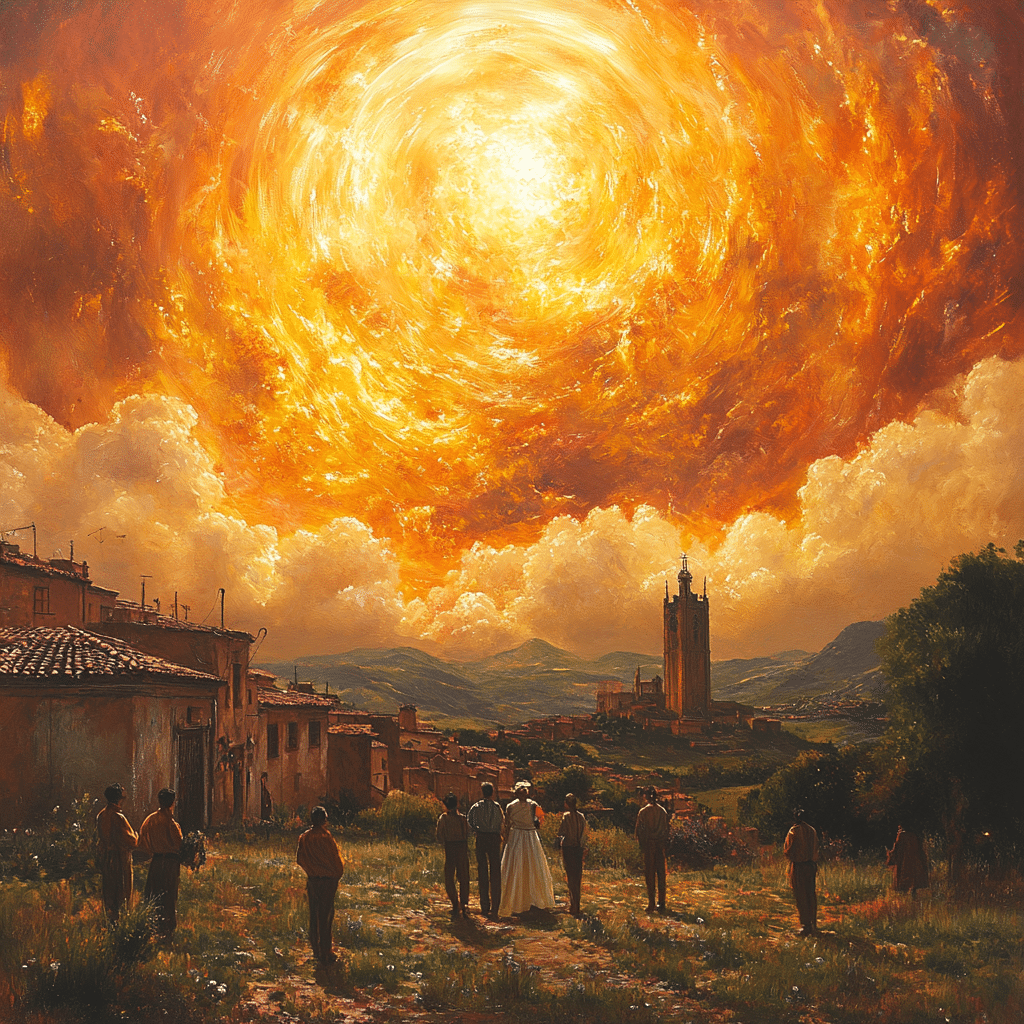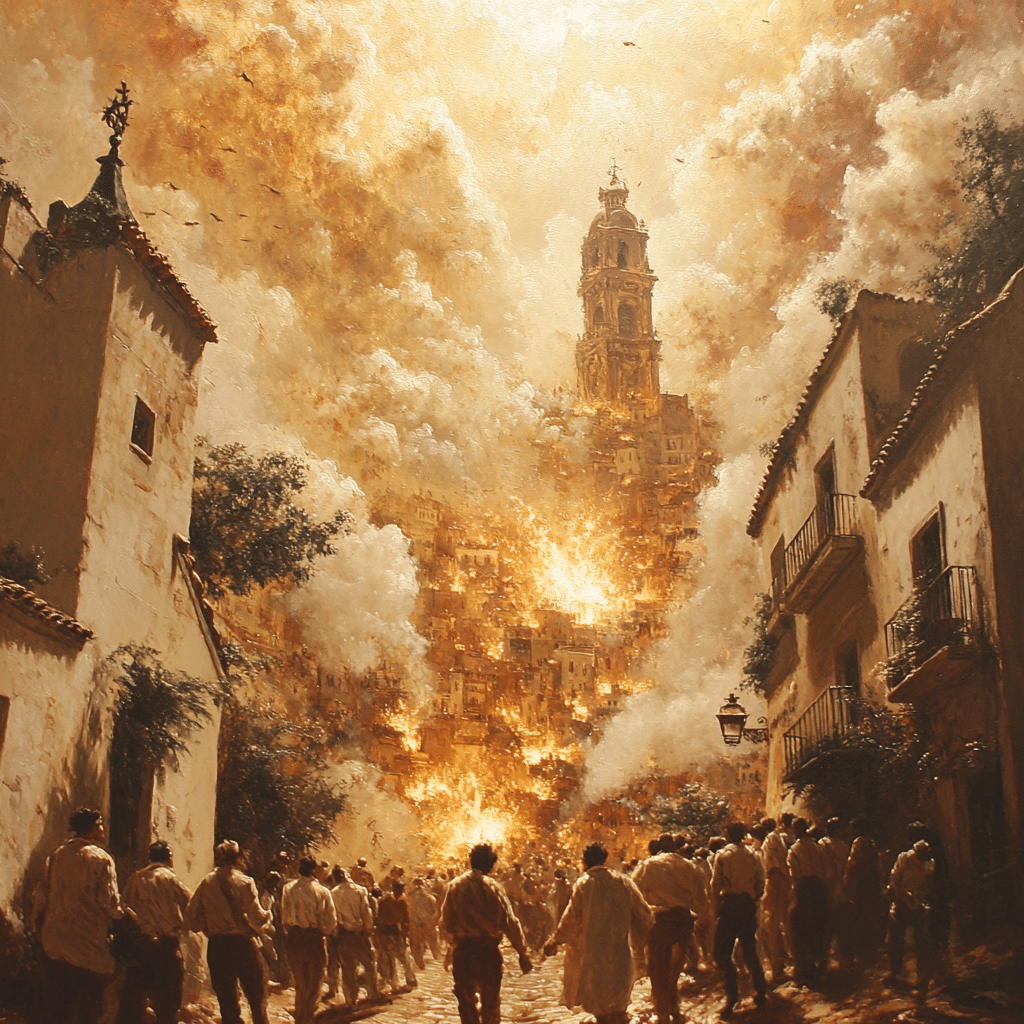La falla de San Andres, or the San Andreas Fault, is more than just a geological marvel; it’s a lurking giant with the unsettling potential to unleash devastating earthquakes on California. Spanning roughly 800 miles, this fault line marks the boundary where the Pacific and North American tectonic plates meet. Since its formation about 30 million years ago, it has become one of the world’s most studied and monitored fault lines. With the Pacific plate shifting 5 to 7 centimeters each year in relation to its North American counterpart, the seismic activity associated with la falla de San Andres makes it a focal point for scientists and residents alike.
The significance of this fault extends far beyond geology. Its history is marred by cataclysmic events, which serve as a grim reminder of nature’s fury. California’s population is vast, with cities like Los Angeles, San Francisco, and San Diego situated near this geological beast. As a result, understanding la falla de San Andres isn’t merely an academic exercise; it’s a pressing public safety concern for millions of Californians whose lives could be turned upside down in seconds.
The Geological Significance of La Falla de San Andres
La falla de San Andres is a major fracture in the Earth’s crust that runs from the northern end of the Gulf of California to the Pacific Ocean, just offshore from San Francisco. Its northwestward trend not only shapes the landscape but also defines the tectonic interactions that have resulted in some of the most significant seismic events in history. The strife along this fault reflects the immense pressures building up beneath California’s surface, making it a critical subject of research for geologists worldwide.
What sets this fault apart is its active nature. Most earthquakes occur at plate boundaries, and la falla de San Andres is a prime example of this phenomenon. Scientists have pinpointed numerous areas within the fault that are susceptible to massive ruptures, where energy accumulates over time in the earth. These potential energy releases could lead to catastrophic events, putting the lives of unsuspecting Californians at risk.
Despite the threat posed by la falla de San Andres, the scientific community remains hopeful. Ongoing research aims to shed light on the dynamics of fault movements, albeit with the understanding that predicting earthquakes is still a work in progress. Institutions around the world are monitoring the fault to gather data, providing invaluable information for residents living in its shadow.

Top 5 Most Devastating Earthquakes Linked to La Falla de San Andres
This earthquake is perhaps the most infamous example linked to la falla de San Andres. With a magnitude of 7.9, it resulted in chaos across San Francisco, causing widespread destruction and leading to an estimated death toll in the thousands. The intensity of the quake and its aftermath demonstrated the catastrophic potential lying dormant along the fault.
Occurring during the World Series, the 6.9 magnitude Loma Prieta quake caught the Bay Area off guard. It claimed 63 lives and caused damages exceeding $6 billion. This earthquake was a wake-up call, emphasizing the fault’s capacity for sudden, life-altering events.
Known for being one of the most studied sections of la falla de San Andres, the Parkfield earthquake registered at 6.0 on the Richter scale. It served as a critical case study for geologists due to its predictable nature, helping experts identify patterns that could inform future predictions and assessments.
The Landers quake of 1992, hitting a magnitude of 7.3, and the Hector Mine quake in 1999, at 7.1, both illustrated the vast scope of seismic risk tied to la falla de San Andres. Even though both events occurred outside urban centers, they exemplified the fault’s potential for causing significant destruction, raising alarms about safety and preparedness.
Ongoing research suggests a significant likelihood of a major seismic event in California’s forecast. Experts like Dr. Lucy Jones assert that there’s a 60% chance of experiencing an earthquake of magnitude 6.7 or greater along la falla de San Andres within the next three decades. This looming threat necessitates continued vigilance and preparedness for California’s residents.
How La Falla de San Andres Affects Daily Life in California
Living in close proximity to la falla de San Andres shapes daily routines for many Californians. Schools conduct earthquake drills regularly, while parents instill preparedness habits in their children. Despite the glamorous appeal of California’s vibrant cities, the fault serves as a constant reminder of the hidden dangers that exist beneath the surface.
Real estate dynamics are significantly influenced by the seismic reality of the region. Areas deemed to have higher seismic risks often see fluctuations in property values, with buyers weighing the allure of living in California against the looming threat of a significant earthquake. This push and pull creates a unique atmosphere in the housing market, often resulting in increased caution when making property investments.
The presence of la falla de San Andres does not merely affect how locals prepare; it shapes the very fabric of societal norms. Emergency kits have become staples in households, and communities increasingly engage in preparedness discussions, reinforcing the idea that residents must always be ready for the unexpected.

Technological Advances in Earthquake Prediction Related to La Falla de San Andres
Advancements in seismic technology have brought a wave of optimism in earthquake prediction. Real-time monitoring networks and sophisticated algorithms designed to analyze tectonic activity have made predicting earthquakes somewhat feasible. Institutions such as Caltech and the US Geological Survey are at the forefront, tirelessly developing technologies aimed at providing early warnings to Californian residents.
These scientific breakthroughs signify a crucial leap toward mitigating the impact of seismic events. They offer locals a sense of security, knowing that should an earthquake strike, there could be precious moments to prepare. With the potential for early warning systems, residents now have a fighting chance against the chaos that a major quake can unleash.
These evolving technological tools are critical for understanding la falla de San Andres’ seismic behavior. They empower scientists to correlate findings, helping to explain past events and identify potential future risks. Though absolute certainty remains elusive, ongoing data collection and analysis hold promise for advancements in this field.
The Psychological Impact of Living Near La Falla de San Andres
The constant threat posed by la falla de San Andres doesn’t just end with physical preparedness; it permeates into the psychological well-being of Californians. Research has shown that anxiety levels tend to be heightened among those living near the fault, creating a pervasive sense of unease. This anxiety can lead to lifestyle adjustments, including creating emergency plans and investing in preparedness kits.
Fear of earthquakes can inhibit relaxation and peace of mind, affecting personal and professional relationships. For some, the mere thought of an impending disaster becomes a heightened source of stress. This psychological burden underscores the need for greater community resilience and mental health awareness in the face of such threats.
Communities are increasingly recognizing the psychological aspects of earthquake readiness. Mental health support initiatives are becoming crucial for those grappling with the burden of living near la falla de San Andres. These programs aim to provide individuals with coping strategies, reducing fear and fostering a culture of readiness.
Innovative Urban Planning and Community Preparedness Initiatives
Cities close to la falla de San Andres are forging a new path in urban planning, focusing on safety and resilience. New construction codes require earthquake-resilient designs, so newer buildings incorporate advanced materials and engineering techniques. This proactive approach aims to ensure that structures can withstand the forces of nature that may arise from the fault.
In tandem, community preparedness programs are becoming vital components of urban safety strategies. Los Angeles, for example, has implemented extensive outreach efforts to educate residents about how to respond during an earthquake. These initiatives help cultivate a sense of community and preparedness, which can ultimately save lives during a seismic event.
As the conversation surrounding la falla de San Andres evolves, so too do the priorities of those living in its vicinity. Emphasizing safety and resilience in urban planning allows cities to confront the realities posed by the fault head-on. The shift in focus ensures that communities are better prepared for the unexpected, ultimately enhancing overall safety.
Wrapping It Up: The Future of La Falla de San Andres and Its Implications
As we approach the latter part of 2024, the topic of la falla de San Andres remains undeniably relevant. With scientific advancements enhancing our understanding of seismic activity and its ramifications, there’s a need for ongoing discussion about daily life in its shadow. The emotional, societal, and infrastructural implications are profoundly felt, requiring collaboration and preparation for the future.
Being informed about risks associated with this formidable fault does not just benefit scientists; it empowers everyone living in California. From enhancing personal preparedness to fostering community resilience, understanding la falla de San Andres marks a crucial step in mitigating potential disasters.
Proactive measures taken today can significantly reduce risks in the future. While the specter of a devastating quake may always loom, a culture of readiness can help foster safety, confidence, and community strength in the years to come. Recognizing that although the earthquake potential remains daunting, consistent effort and informed strategies can pave the way toward a safer California.
Residents, scientists, and officials alike must remain vigilant, working together to harness knowledge and innovation. The impact of la falla de San Andres is profound—but by taking action now, there is hope for a more resilient tomorrow.
La Falla de San Andres: Trivia and Fun Facts
Geological Wonders
Did you know that la falla de san andres is one of the most famous faults in the world? It spans about 800 miles, running from Northern California to Southern California. This colossal fault line’s sheer size makes it a fascinating subject of study for geologists. Interestingly enough, the area around the fault is rich with diverse landscapes, including beautiful parks similar to the striking vistas of Lairg, where natural beauty abounds. Just like those unique Scottish landscapes, the regions along la falla de san andres have their hidden gems, waiting to be explored.
Earthquake Trivia
While the thought of earthquakes may send a shiver down your spine, it’s captivating to note that la falla de san andres isn’t always rumbling. In fact, scientists estimate that significant seismic activity occurs every 150 years or so, and the last major quake was in 1906. It’s a bit like how dining in The dark can surprise your senses in unexpected ways! Just as you can never truly predict how a meal might surprise you based on taste alone, it’s unpredictable when the ground might shake beneath your feet. Speaking of surprises, this fault is also known for its role in parts of pop culture, perhaps akin to the gripping tale of la Mujer Del Diablo, intertwining the themes of danger and drama.
The Human Element
Not only does la falla de san andres remind us of nature’s power, but it also reflects the resilience of communities in California. People have adapted their lives around the fault, with some becoming very aware of emergency preparedness. Jermaine Crawford, a notable figure in community engagement, often emphasizes preparedness in discussions about local risks. Awareness among the populace can create a culture of resilience, much like the way athletes like Jordan Farmar inspire the younger generation to face challenges head-on.
As we explore la falla de san andres, it reminds us of both the earth’s prowess and human adaptability, offering an exciting blend of nature and perseverance. Just as the Scandinavian cold pool refreshes and invigorates those daring enough to plunge in, living near this fault line certainly brings a jolt to everyday life—whether through a tremor or the thrill of knowing you live near such a dynamic geological phenomenon.

What happened to San Andreas fault in California?
The San Andreas Fault in California is a major fracture in the Earth’s crust that runs for more than 800 miles, moving at a rate of 5 to 7 centimeters a year. It’s one of the most active fault zones in the world and has been active for about 30 million years, with the Pacific plate shifting around 300 kilometers northward since the fault began.
Where is Falla de San Andres?
Falla de San Andrés, or the San Andreas Fault, is located in extreme western North America, stretching from the northern Gulf of California through western California and extending seaward into the Pacific Ocean near San Francisco.
What cities will be affected by the San Andreas fault?
If the San Andreas Fault ruptures, cities like San Francisco, San Jose, and Oakland could be severely impacted, along with some shaking felt in Sacramento. A rupture in the northern section would likely not affect major cities in California.
What will happen when the San Andreas Fault ruptures?
When the San Andreas Fault ruptures, it can lead to devastating earthquakes, resulting in significant loss of life, especially in densely populated areas like Los Angeles and surrounding regions, and potential damages amounting to hundreds of billions of dollars.
What is the deadliest fault line in the US?
The deadliest fault line in the U.S. is often considered to be the San Andreas Fault, due to its history of causing major earthquakes and the population density of the regions it affects.
What would a 9.0 earthquake do to California?
A 9.0 magnitude earthquake would be catastrophic for California, likely resulting in massive infrastructure damage, widespread injuries, and possibly thousands of fatalities, particularly in cities close to the fault line.
Can you walk on the San Andreas Fault?
Yes, people can walk on the San Andreas Fault, and certain areas have trails where visitors can safely observe the fault. However, it’s important to do so with caution and ideally with guidance from experts.
Can you drive through the San Andreas Fault?
You can drive through areas near the San Andreas Fault, as it runs along major highways and roads. Just be aware that you’re traversing a significant geological feature and always stay alert for any signs of geological activity.
What is the biggest fault line in California?
The biggest fault line in California is the San Andreas Fault, which is well-known for its size and seismic activity. It’s a crucial part of the state’s geology and earthquake risks.
What part of California is safest from earthquakes?
Areas in northern California, particularly further from the fault line, are generally considered safer from earthquakes compared to southern California, which has a larger population near fault lines.
What city has the highest probability of an earthquake in California?
Los Angeles has a high probability of experiencing an earthquake given its proximity to the San Andreas Fault and various other fault lines in the region.
Where is the next big earthquake likely to occur in California?
The next big earthquake in California is most likely to occur along the major fault lines, including the San Andreas Fault, with the northern segment being particularly monitored for seismic activity.
Is it safe to live in California because of earthquakes?
Living in California means accepting some risk of earthquakes, but many areas have good building codes and preparedness programs to help minimize risks and improve safety.
Is California going to break off?
There’s no solid evidence that California is going to break off from the mainland. While the San Andreas Fault is very active, the tectonic processes involved don’t suggest a complete separation.
Is San Diego safe from San Andreas fault?
San Diego is relatively safe from the San Andreas Fault, as it’s about 35 miles away from the nearest part of the fault. However, it can still experience earthquakes from other nearby fault lines.



